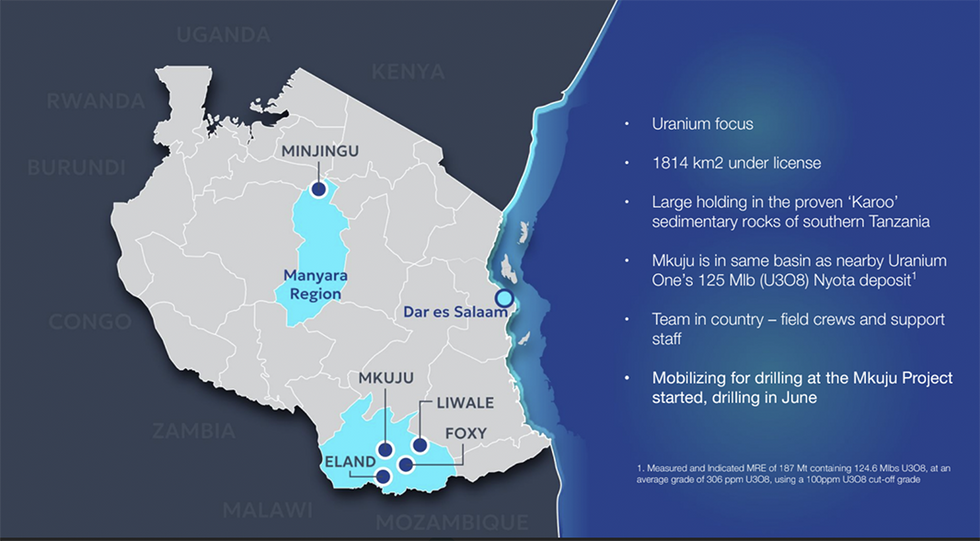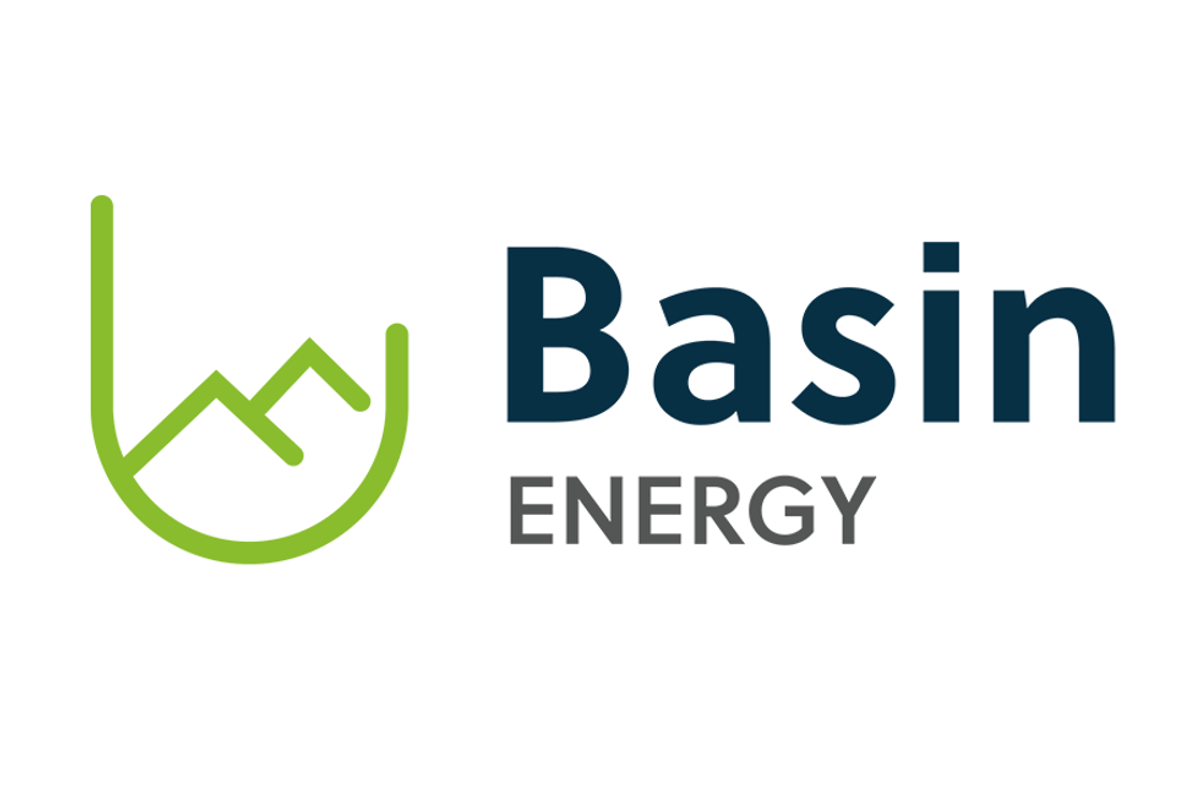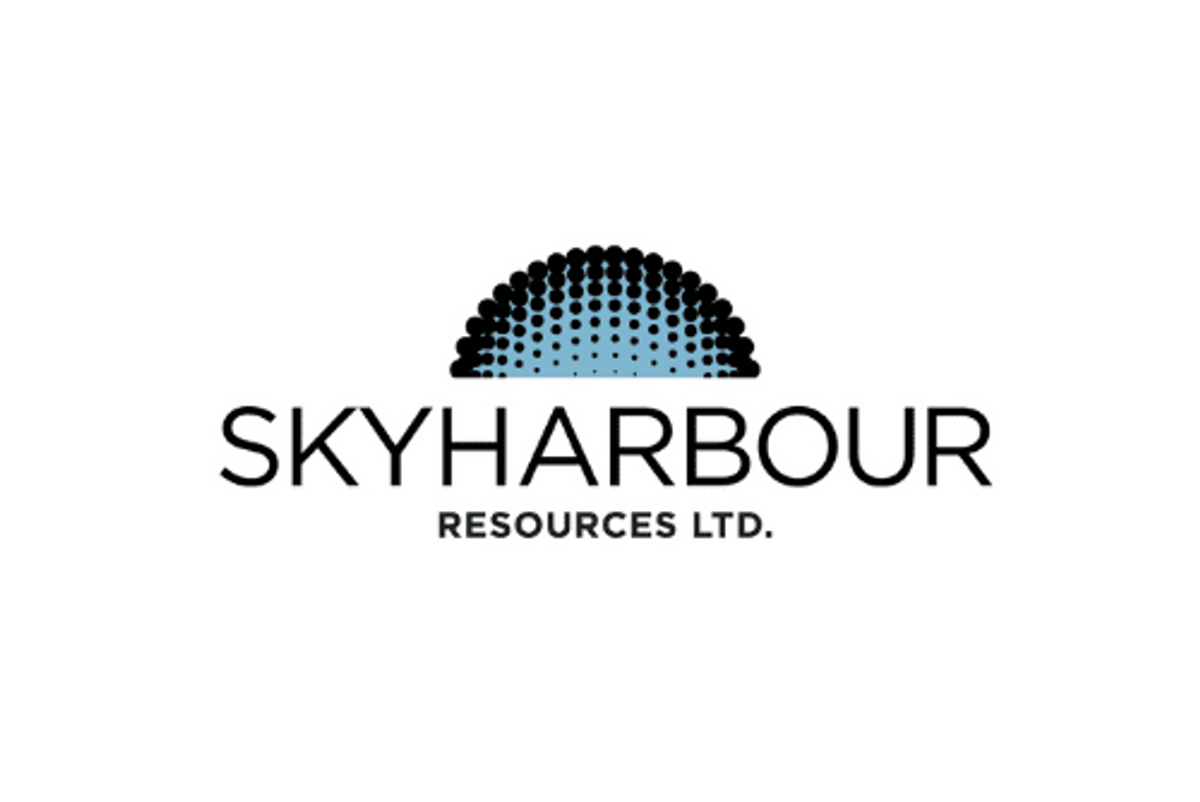
May 30, 2024
Gladiator Resources (ASX:GLA) focuses on uranium assets covering 1,811 square kilometres located in Tanzania. The company’s key projects include – Mkuju, Minjingu, Liwale, Foxy and Eland. The flagship Mkuju has the potential to host world-class uranium deposits given its proximity to the Nyota deposit, which contains 124.6 million pounds (Mlbs) U3O8. Nyota is regarded as one of the largest uranium deposits in the world.
The company is planning a 2024 drill program at Mkuju focusing on the South West Corner (SWC), Mtonya and Likuyu North targets. The 2024 drilling program will commence with initial core drilling at the SWC target, where 2023 trenching revealed up to 7,139 parts per million (ppm) U3O8. Drilling at Mtonya and Likuyu North aims to explore potential extensions and new zones of the existing uranium deposits.

The Mkuju project spans over 725 sq kms and is located 20 kms south of Uranium One’s Nyota deposit, regarded as one of the largest uranium deposits in the world. Nyota hosts a measured and indicated mineral resource estimate of 187 metric tons (MT) at 306 ppm U3O8, containing 124.6 Mlbs U3O8. The deposit is being developed by global uranium company Uranium One. The Nyota deposit and the Mkuju project are underlain by sediments of the lower Karoo, which are considered highly prospective for uranium.
Company Highlights
- Gladiator Resources is an ASX-listed exploration and mining company focused on uranium. The company operates eight exploration projects, mainly in Tanzania, covering a total area of 1,811 sq kms.
- The company’s key projects include – Mkuju, Minjingu, Liwale, Foxy and Eland.
- Gladiator’s primary short term focus is on advancing the Mkuju project, located only 20 kms south of Uranium One’s Nyota deposit, regarded as one of the largest uranium deposits in the world.
- The 2024 drill program at Mkuju will focus on the South West Corner (SWC) initially, where trench assay results received Dec/Jan 2023/24 confirmed high-grade uranium in sandstone, 1000’s ppm U3O8 in places.
- Further work is also planned at Mtonya and Likuyu North – also located within the promising Mkuju area.
- Tanzania is endowed with many uranium-bearing deposits and is known for its mining-friendly policies. The government offers attractive tax policies and quick permitting processes to encourage investment in the sector.
- The presence in relatively attractive uranium mining jurisdictions such as Tanzania positions the company to capitalize on opportunities in the uranium sector and deliver superior returns to its shareholders.
This Gladiator Resources profile is part of a paid investor education campaign.*
Click here to connect with Gladiator Resources (ASX:GLA) to receive an Investor Presentation
GLA:AU
The Conversation (0)
29 May 2024
Gladiator Resources
Capitalizing on the uranium momentum with prolific assets in Tanzania
Capitalizing on the uranium momentum with prolific assets in Tanzania Keep Reading...
13h
China’s Sole Uranium Miner Soars in Market Debut
China National Uranium (SZSE:001280) surged on its first day of trading in Shenzhen, raising about 4 billion yuan (US$570 million) in its Wednesday (December 3) debut as company shares more than tripled in value by the market close.The state-backed miner priced 248 million shares at 17.89 yuan... Keep Reading...
02 December
Niger Moves to Sell Uranium From Orano's Seized SOMAÏR Mine
Niger’s military government announced that it intends to put uranium produced by the SOMAÏR mine on the international market.Head of the junta, General Abdourahamane Tiani, told state television Tele Sahel that “Niger's legitimate right to dispose of its natural riches to sell them to whoever... Keep Reading...
30 November
Expands REE and Uranium Footprint at Sybella-Barkly
Basin Energy (BSN:AU) has announced Expands REE and uranium footprint at Sybella-BarklyDownload the PDF here. Keep Reading...
28 November
Orano Condemns Illegal Uranium Transfer from Niger Mine
Orano said it “strongly condemns” the removal of uranium from the SOMAÏR mine in Northern Niger.The French firm called the transfer illegal and a direct breach of the International Center for Settlement of Investment Disputes’ (ICSID) September ruling, which prohibits the material's sale or... Keep Reading...
25 November
Canada, India Close to Resuming Uranium Trade After Diplomatic Freeze
Canada and India are preparing to unveil a multibillion-dollar uranium export agreement, marking the strongest sign yet that the two countries are rebuilding ties after a diplomatic freeze. Two people familiar with the negotiations revealed that the deal, valued at roughly US$2.8 billion, would... Keep Reading...
Latest News
Latest Press Releases
Related News
TOP STOCKS
American Battery4.030.24
Aion Therapeutic0.10-0.01
Cybin Corp2.140.00





